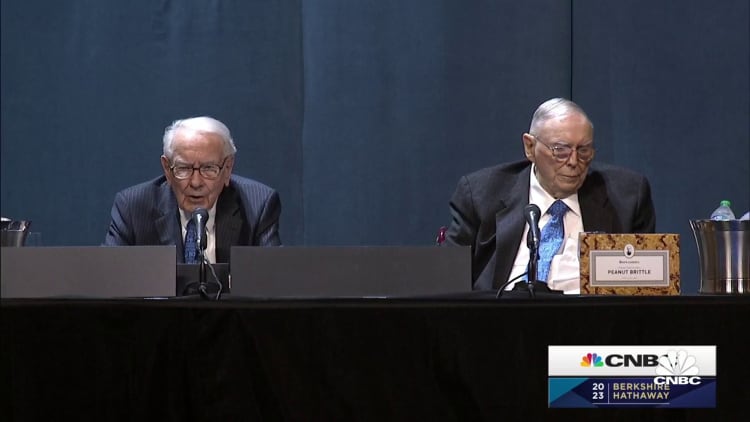Home Alone (1990)
20th Century Fox
The classic Christmas movie “Home Alone” tells the improbable tale of a family who leaves their 8-year-old son home when they leave for vacation.
Yet in the years since the 1990 film was released, viewers have focused on another question — how wealthy was the fictitious McCallister family featured in the movie?
The family orders 10 pizzas on the eve of their trip, lives in a house that can sleep 15 people (including extended family) and all fly to Paris for the Christmas holiday.
“They’re well off and in a good place financially,” Cody Garrett, a certified financial planner, owner and financial planner at Measure Twice Financial in Houston, said of the first impression of the McCallisters’ circumstances.
Here’s a look at other stories impacting the financial advisor business.
But the family may not be quite as wealthy as they seem, Garrett said.
To better understand the details of the McCallister family’s financial circumstances, Garrett recently did a deep dive analysis of the family’s finances from “Home Alone” and “Home Alone 2: Lost in New York,” which debuted in late 1992, and hosted a webinar with around 25 financial planners to discuss financial planning opportunities that arise in the movies.
Both movies were shot long before social media made it popular to flaunt personal wealth online. Nevertheless, the lifestyle the McCallister family shows to the world may not necessarily be an indication of their wealth, Garrett said.
“There’s a lot of things that are showing that they spent a lot of money, or at least financed a lavish lifestyle to the public,” Garrett said. “But inside their own home, they’re actually maybe a little scared about money.”
What the McCallister lifestyle would be worth now
The Home Alone Experience created by Disney+, opens in London, offering an immersive experience inspired by the Christmas movie, with set recreations of the McCallister family’s home.
David Parry Media Assignments | PA Wire | AP
What looked lavish more than 30 years ago when the first two movies were shot is now even more luxurious today, thanks in large part to the effects of inflation.
The actual five-bedroom, six-bathroom Winnetka, Illinois, home where the movie was filmed was listed for $5.25 million in the spring. Today, it is still under contract, and a final sale price won’t be known until the deal is finalized, according to Zillow spokesperson Matt Kreamer.
To buy the house at $5.25 million today would cost approximately $34,000 per month, with principal, interest and property taxes, according to Kreamer. That’s with 20% down and a 7% mortgage rate.
To comfortably afford the home, you would need $100,000 per month in income, assuming you’re adhering to an affordability threshold of not spending more than one-third of your income on housing costs, Kreamer said.
“It’s a pretty spectacular house, and certainly one of the more famous movie homes that people can instantly recognize,” Kreamer said.
In 1990 when the first movie debuted, the home would have likely been worth a little less than $1 million, Kreamer estimates, which is still high for that time.
Yet the home may not necessarily point to a high net worth for the McCallister movie family.
“I would not be surprised if they don’t have much equity in their house,” Garrett said, given the couple’s stage of life and circumstances.
In the films, the McCallisters are also driving what at the time were relatively new cars — a 1986 Buick Electra Estate Wagon and a 1990 Buick LaSabre — each of which would be valued at $40,000 in today’s dollars, according to Garrett’s estimates.
While the family is eager to show their wealth — including mother Kate paying in cash for the $122.50 pizza bill while also offering a generous tip — they’re frugal when it comes to the things people don’t see, Garrett said.
How the family talks about money can sometimes point to a scarcity mindset, he said. For example, Kate mentions she doesn’t want to waste the family’s milk before they leave on vacation.
The family’s lifestyle isn’t paid for all on their own. Peter’s brother Rob actually foots the cost of the Paris trip for the family. That airfare would cost around $55,650 today, GoBankingRates recently estimated.
What financial planning lessons are hidden in the movie
Many major details about Kate and Peter McCallister’s finances are not disclosed, including what they do for a living.
Nevertheless, the financial planners who evaluated the family’s circumstances saw some holes that could be addressed with planning.
On the top of their wish list: proper insurance coverage.
Because Kate and Peter McCallister have five children, having enough life and disability insurance should they pass away or become unable to work should be a top priority to ensure their dependents are provided for, according to Garrett.
The movie — which includes many slips and falls at the family’s home as 8-year-old Kevin tries to ward off a pair of robbers — also signals a need for an umbrella insurance policy, in case the McCallisters are found liable for injuries or damages that occur.
Kate and Peter — who forget or lose their son Kevin in both of the first two “Home Alone” movies — would also be wise to make proper estate planning arrangements in the event they can no longer provide or care for their children. That includes having wills, powers of attorney, advance directives, beneficiary designations, trusts and proper account titling, all kept up to date.
The couple should name physical and financial guardians who can care for the children. They may also establish a pre-need guardian for the children who can step in if the parents are unable to care for them even for a short period of time, said Aubrey Williams, financial planner at Open Path Financial in Santa Barbara, California.
“If the parents are not there to take care of the kids, there’s the possibility that kids, even if briefly, will become a ward at the state because there’s no one to care for them,” Williams said.

 Blog Post1 week ago
Blog Post1 week ago
 Economics1 week ago
Economics1 week ago
 Finance1 week ago
Finance1 week ago
 Economics1 week ago
Economics1 week ago
 Economics1 week ago
Economics1 week ago
 Personal Finance1 week ago
Personal Finance1 week ago
 Accounting1 week ago
Accounting1 week ago
 Economics1 week ago
Economics1 week ago











